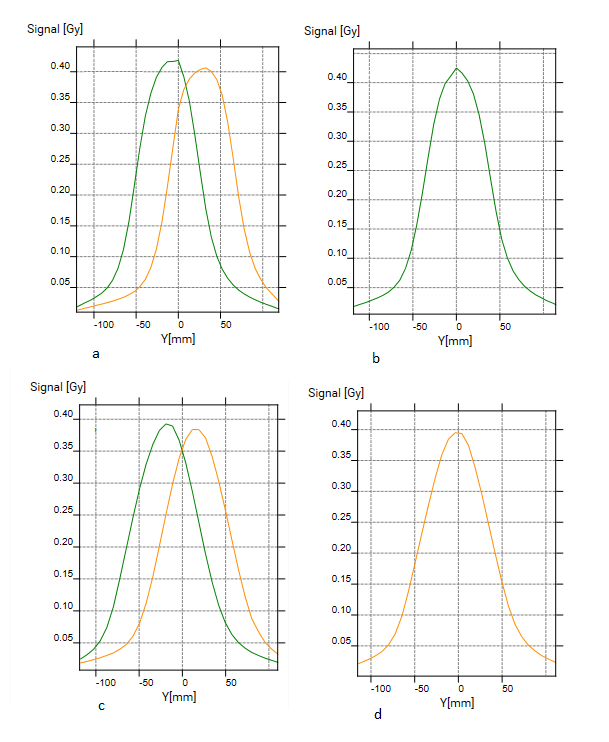Effective measurement plane for VMAT QA in MatriXX Evolution and the new MatriXX Resolution
PO-1577
Abstract
Effective measurement plane for VMAT QA in MatriXX Evolution and the new MatriXX Resolution
Authors: Ivo Petrov1, Tsvetoslav Lazhovski1, Yury Kirpichev2, Dimitar Ganchev1
1Heart and Brain Center of Clinical Excellence, Medical Physics, Pleven, Bulgaria; 2Medscan LLC, Medical Physics, Moscow, Russian Federation
Show Affiliations
Hide Affiliations
Purpose or Objective
Pretreatment QA is especially important for state of the art techniques such as VMAT. Common method is to compare in specialized software dose planes measured with 2D detector arrays in phantom with corresponding planes from TPS dose distributions calculated in the phantom studyset.
This work aims to evaluate for practical purposes the difference between the phantom/array setup plane and the effective plane of measurement, as well as the need to apply effective plane of measurement correction (shift) for native angle (not collapsed to gantry 0) VMAT QA with the widely used MatriXX Evolution and the recently released new MatriXX Resolution.
Material and Methods
20 6MV plans for different sites (breast, head and neck, pelvis, brain) were selected. Phantom dose distributions were calculated on Monaco 5.51 TPS using Monte Carlo dose calculation algorithm, irradiated on Elekta Versa HD linac and measured with both MatriXX devices in the appropriate phantoms, positioned on the isocenter positioning marks on them for measurement (on the linac couch) and in the tps (for plan isocenter). For evaluation purposes isocenter dose planes were exported from TPS as well as planes with vertical shift 1, -1, -2 and -3 mm. Gamma analysis 3%, 3mm, 5% threshold was performed for all measurements against all TPS planes for each 2D array. To evaluate the shift between the effective plane of measurement and setup plane for beams coming laterally, measurements of narrow 25x1 beam at 90 degrees gantry and 7.5 degrees collimator tilt were performed with both Evolution and Resolution, positioned with marks in the isocenter and vertically offset.
Results
Best mean gamma pass rate for Evolution was achieved with the shifted 2mm down TPS planes (mean 99.33%, min 96.2%, max 100%) and for the setup plane (no shift) for Resolution (mean 99.48%, min 97.0%, max 100%).
In g90 tilted narrow beam measurements with Evolution: offset in Y-axis peak at isocenter, symmetrically offset on the Y-axis peak in 4 mm up (c); symmetrical around the center peak in 2 mm up (d) - effective plane of measurement and setup plane are not coinciding for lateral beams. Resolution did not exhibit the same behaviour: a symmetrical around Y peak with position in isocenter (b); almost symmetrically offset peaks at 2 mm up and 2 mm down (a).

Conclusion
Effective plane correction is required for VMAT QA with MatriXX Evolution and can be achieved by using for verification the TPS plane 2 mm down from the setup plane, while no such correction is required for Resolution. Evolution, although introducing the gantry angle sensor and angular correction factors lookup tables in the software to compensate for the angular dependency, still uses the same basic design geometry and detectors as its predecessors, designed for measurement of beams perpendicular to the detector array, while the new Resolution has smaller detectors (smaller depth correction) and its geometry has been redesigned with rotational plan QA in mind, which could explain these results.